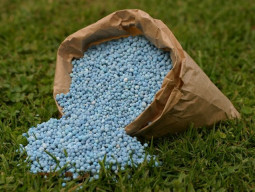
Shahi Hammam (Royal Bath), located inside the Delhi Gate is to be restored with help from the Aga Khan Trust for Culture (AKTC). The restoration will begin from July 22 and is set to be completed in a year’s time The Express Tribune has learnt.
Most of the restoration cost of Rs39,498,833 will be borne by the Norwegian embassy.
The Shahi Hammam was built around 1634 AD by Hakim Ilmuddin Ansari, the governor of Lahore in Emperor Shah Jahan’s (1628-58 AD) reign. It was a public bath that serviced travellers as well as residents of the city. It is a single-storey building covering an area of over 1,000 square metres. It was built on the pattern of Turkish and Iranian bathing establishments of the time (with hot, warm and cool plunges and sweat rooms). The Shahi Hammam has 21 connected rooms and a separate room for offering prayers.
WCLA Director General Kamran Lashari said, “The project aims to conserve the Hammam’s unique structure. Its structural fabric and decorations will be preserved.”
The Hammam will be integrated with the WCLA’s Shahi Guzargah (Royal Trail) project and become part of the Delhi Gate ensemble, he said.
“The Shahi Hammam presents a picture of decay and deformity,” said Lashari.
In 1991, under the Punjab Urban Development Project (a joint initiative of the Government of the Punjab and the World Bank) the infrastructure of a substantial part of the Walled City was upgraded. Selected buildings were also conserved and put into adaptive re-use. The Shahi Hammam was conserved as part of the initiative and converted into a girls’ vocational school. During the last effort, the schools and offices located in the Hammam were removed. But the north-western part was occupied by shops and could not be documented or conserved.
Talib Hussain, a culture heritage expert said, “The WCLA has managed to remove the encroachments around the building and the northern side of the Delhi Gate bazaar has been partially restored.”
The infrastructure along the bazaars has been re-modelled in a way so as to bring it in harmony with the urban surroundings of the monument. In the 400 years of its existence, the street around the monument has risen by more than a metre, he said.
“The initiative to restore the Shahi Hammam is a great effort to preserve the 400-year old monument, and save it for future generations to cherish its beauty,” said Hussain, “It is hard to remove the modern elements that conceal the underlying historical features of the Hammam.”
WCLA Communication Expert Tania Qureshi said, “Despite recent developments and the commercialisation the Walled City retains much of its heritage character. We need to preserve the remaining structures. The restoration of the Shahi Hammam is a step forward to that end.
The Walled City will soon be restored to its original spirit and become a cultural landmark of the city.”
The Hammam is structurally sound but its walls have been badly defaced due to encroachments. It has suffered misuse and partial restoration owing to the absence of a proper management plan, she said.
Published in The Express Tribune, July 20th, 2013.


1725030039-0/Untitled-design-(2)1725030039-0-165x106.webp)
1725366721-0/kyle-(1)1725366721-0-165x106.webp)
1731410017-0/BeFunky-collage-(45)1731410017-0-165x106.webp)





1732012115-0/Untitled-design-(14)1732012115-0-270x192.webp)






COMMENTS
Comments are moderated and generally will be posted if they are on-topic and not abusive.
For more information, please see our Comments FAQ